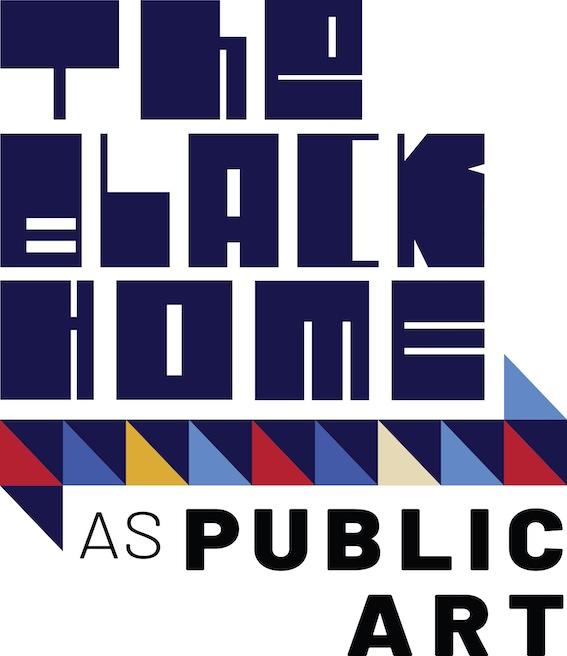The Black Home as Public Art Symposium Pluralizes the Architectural Canon
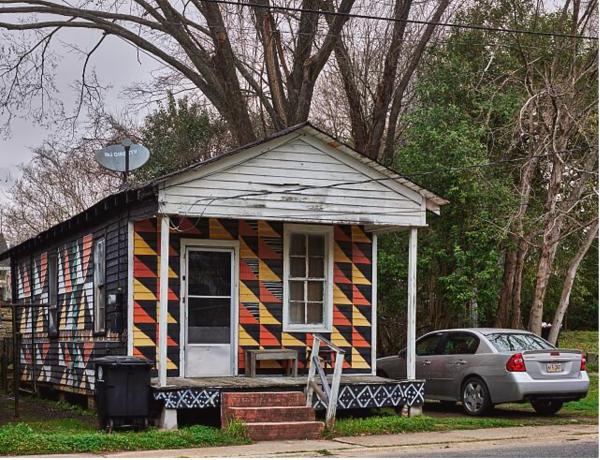
On September 11-12, 2024, The University of Texas at Austin School of Architecture will host The Black Home as Public Art, a one-and-a-half-day symposium examining creative notions of the Black home in the United States. Organized by Associate Professor Charles L. Davis II and the Center for American Architecture and Design, the symposium will bring together designers, historians, curators, and archivists for interdisciplinary discussions about eight activist- and artist-led practices that creatively reinterpret the Black home, their significance, and the importance of pluralizing the architectural canon for a more holistic understanding of the built environment.
“This exhibit uses the broad categories of “the activist-builder” and “the artist-developer” to analyze the types of social actors that employed a tactical combination of ad hoc spatial and material strategies to meet the social, political, and economic demands of the Black radical tradition from the 1960s to today,” Davis said. “As architectural expressions of racial uplift, these projects collectively embody decolonial representations of Blackness in a settler colonial context.”
The symposium will be accompanied by The Black Home as Public Art exhibition, on display in the School of Architecture’s Mebane Gallery from August 26-November 15. The exhibition will feature several projects that employ adaptive reuse and public art strategies to reinterpret the Black home to inflect the demands of Black social movements, contemporary politics, and racial uplift. These include projects from designers like Theaster Gates, Tyree Guyton, Rick Lowe, Smokehouse Associates, and Amanda Williams, who have built their artistic practices on reforming the detached housing typologies found in working-class neighborhoods into a form of publicly engaged art. They also include the work of activists and theorists such as Huey Newton and Bobby Seale of the Black Panther Party, the playwrights June Jordan and Amiri Baraka, and the philosopher Angela Davis.
Together, the exhibition and symposium serve as the inaugural edition of The Black Space Project, a broader research effort that will mine the lost history of African American contributions to the built environment through exhibitions, symposia, publications, and workshops—developing a more complete portrait of Black architectural modernity as it emerged across the United States.
“The Black Home as Public Art and the broader Black Space Project address aspects of our discipline that have been relegated to the margins of scholarship—the contributions of Black Americans and non-licensed practitioners,” said Heather Woofter, Dean of The University of Texas at Austin School of Architecture. “This important work expands the boundaries by which architects, designers, and theorists consider our built environment, broadening our understanding and paving the way for new, interdisciplinary avenues of inquiry.”
Invited participants for this year’s symposium include Aisha Densmore-Bey, Curry J. Hackett, Scott L. Ruff, and Komozi Woodard, introduced by School of Architecture faculty members Charles L. Davis II, Assistant Professor Tara A. Dudley, and Assistant Professor Bryan E. Norwood. Dell Upton will kick off the symposium on Thursday, September 11 with a keynote address taking place at 5:00 p.m. in the Goldsmith Lecture Hall.
The Black Home as Public Art is supported by a grant from the Graham Foundation for Advanced Studies in the Fine Arts, an Arnold W. Brunner Grant from The New York Chapter of the American Institute of Architects and administered by The Center for Architecture, Inc., the Meyer Foundation Centennial Lectureship, and the McDermott Excellence Fund.
The exhibition and symposium are free and open to the public. Symposium seating will be available on a first-come, first-served basis; no registration required. The event will also be streamed live on the School of Architecture’s YouTube channel.
For a full event schedule and more information about the exhibition, visit the School of Architecture’s website.
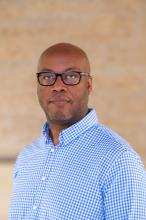
Charles L. Davis II is an associate professor of architectural history and criticism at The University of Texas at Austin School of Architecture. His research excavates the role of racial identity and race thinking in architectural history and contemporary design culture. He has published articles and essays in Architectural Research Quarterly, Journal of the Society of Architectural Historians, Harvard Design Magazine, Log, Aggregate, Append-x, and VIA. Charles is currently working on two book projects. The first is a sole-authored monograph tentatively entitled “Black in Place: A Spatial History of Black Architectural Modernity," which recovers the overlooked contributions of black artists, architects, and activists in shaping the built environment from the Harlem Renaissance to Black Lives Matter. The second is a co-edited volume that examines the racial underpinnings of the historiography of nineteenth-century American architecture, and critiques the modernist bent of past history surveys to recover the contentious debates of American nationalism that influence the built environment. He received his PhD in architecture from the University of Pennsylvania and an MArch and BPS from the University at Buffalo.
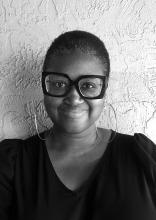
Aisha Densmore-Bey, a licensed architect, runs a Boston-based eponymous creative office specializing in architecture, graphic design, design strategy, film, and art. Aisha’s children’s book, Who Made My Stuff? Miles Learns About Design, and t-shirt for the Black Women in Architecture Network are included in the collection at the National Museum of African American History and Culture, part of the Smithsonian Institution. Her research investigates how artists and arts-based planning in communities of color can create a framework for healthy and equitable neighborhoods in major US cities. She holds a DDes from the Harvard Graduate School of Design.

Tara A. Dudley is an assistant professor at The University of Texas at Austin School of Architecture, where she teaches interior design history and architectural history courses. Her scholarship examines the contributions of African American builders and architects to the American built environment, focusing on the antebellum and Reconstruction eras in the US South. She is the author of Building Antebellum New Orleans: Free People of Color and Their Influence (University of Texas Press, 2021), which has been recognized with multiple awards. As a member of the University’s Commemorative and Contextualization Projects research team, Tara is also engaged in research on the contributions of Black builders and craftsmen to the built environment of The University of Texas at Austin campus. She served as a senior architectural historian for the preservation consulting firm HHM & Associates, Inc. for two decades and continues to consult on preservation projects nationwide. She holds a BA in art history from Princeton University, and an MSAS in historic preservation and PhD in architecture from The University of Texas at Austin.

Curry J. Hackett is an award-winning transdisciplinary designer, public artist, and educator. Curry has taught architecture at the University of Tennessee–Knoxville School of Architecture, Howard University, City College of New York Spitzer School of Architecture, Carleton University Azrieli School of Architecture and Urbanism, and Yale School of Architecture. His ongoing research project, Drylongso, explores the complex relationships between Black southern culture, geography, and land. This project has been awarded research funding by the Graham Foundation, Washington Project of the Arts Wherewithal Grant Program, Journal of Architecture Education’s inaugural fellowship, and exhibited in a solo installation at theTwelve gallery. He holds a MAUD from the Harvard Graduate School of Design, where he was also recipient of the Druker Prize Traveling Fellowship and a finalist for the internationally recognized Wheelwright Prize.

Bryan E. Norwood is an architectural historian and assistant professor in the School of Architecture. His research focuses on architecture and building practices in the United States and Atlantic World in the long nineteenth century. From 2018 to 2021, Bryan was a postdoctoral fellow in the Michigan Society of Fellows. Previously, he was the Charles E. Peterson Senior Fellow at the Athenaeum of Philadelphia in 2016–2017 and guest-editor of issue 42 of the journal Log entitled “Disorienting Phenomenology” in 2018. His writing has appeared in Places, Log, Perspecta, The Journal of Architectural Education, Harvard Design Magazine, Culture Machine, and Philosophical Forum, as well as collected volumes. Bryan received a BA in philosophy and a BArch from Mississippi State University, an MA in philosophy from Boston University, and an AM and PhD in the history and theory of architecture from Harvard University.
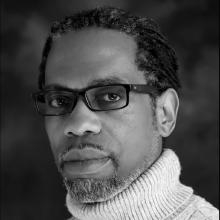
Scott L. Ruff is an adjunct associate professor at the Pratt Institute School of Architecture and the principal of RuffWorks Studio. In 2017 he was a Louis I. Kahn Visiting Professor at Yale School of Architecture. He has also taught at Tulane University, Syracuse University, Hampton University, University of Buffalo, Cornell University, and New York Institute of Technology. Born in Buffalo, New York, Scott received a BArch and a MArch II from Cornell University.
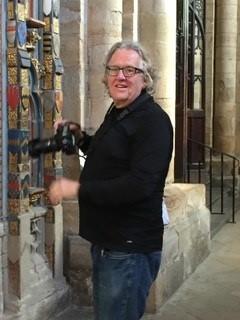
Dell Upton is Distinguished Research Professor of Architectural History in the Department of Art History, UCLA. He formerly taught at UC Berkeley and the University of Virginia. Upton’s work on architecture and material culture has focused on American, and especially Black American, and world architecture. Currently he is investigating the construction and destruction of political monuments since antiquity. Upton’s most recent books include What Can and Can’t Be Said: Race, Uplift and Monument Building in the Contemporary South and American Architecture: A Thematic History. In 2025 Dumbarton Oaks will publish Landscapes in the Making, a volume he co-edited with Stephen Daniels.
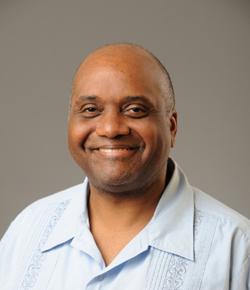
Komozi Woodard is a professor of history, public policy, and Africana studies at Sarah Lawrence College. His interests are in African American history, politics, and culture, emphasizing the Black Freedom Movement, women in the Black Revolt, US urban and ethnic history, public policy and persistent poverty, oral history, and the experience of anti-colonial movements. Author of A Nation Within a Nation: Amiri Baraka and Black Power Politics, he also has made many contributions to academic literature in the form of reviews, chapters, and essays in journals, anthologies, and encyclopedia. He has served as reviewer for American Council of Learned Societies, adviser to the Algebra Project and the PBS documentaries Eyes on the Prize II and America’s War on Poverty, and on the board of directors for the Urban History Association. He earned his BA at Dickinson College and his MA and PhD in history at the University of Pennsylvania.
EXHIBITION DETAILS >>
SYMPOSIUM INFORMATION >>
Above: Carol M. Highsmith, “Art house” in Baton Rouge, Louisiana, February 10, 2021. Digital photograph. Courtesy the artist
